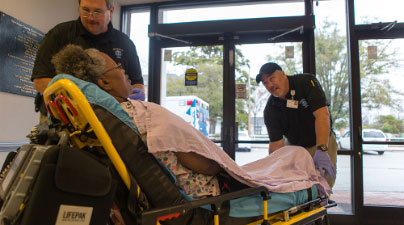In this day and age, it’s no surprise; people are living longer. Over the last 5 decades the number of older people in the population and in the workforce has grown and is projected to continue to grow. The Labor Department’s Bureau of Labor Statistics explains that by that one in four workers in the United States are over the age of 55. In the span of 20 years the employment of workers aged 65 or older has grown by an incredible 117%, and the employment of individuals ager 75 or older has also increased by the same rate. While the labor participation rate for workers aged 65 to 74 is expected to remain lower than those of prime working age, it is still anticipated to increase over the next decade, according to EHS Daily Advisor.
Benefits of Older Workforce
There is a large difference in population size when you look at the Baby Boomers and compare to subsequent generations. EHS Daily Advisor explains that there are not enough young workers to replace older workers currently in the workforce, essentially meaning employers must retain their older workers. There are many benefits from an aging workforce, including the following:
- Low absenteeism and turnover
- A strong work ethic among older workers
- Maintenance or improvement in overall productivity of the workforce
- Retention of experienced workers
- The transfer of expertise among generations in a multigenerational workforce
Health & Safety of Older Workers
Generally, older workers are safer workers due to their past experiences. They’re less likely to engage in ‘risky’ behavior when compared to their younger coworkers. Although the aging workforce are injured less frequently, when they are injured of ill on the job it may be more severe. According to EHS Daily Advisor, normal age-related changes in an older worker may result in diminished cognitive, physical, or sensory capabilities.
Overcoming Challenges for Aging Workforce
The National Institute for Occupational Safety and Health, otherwise known as NIOSH, launched the National Center for Productive Aging and Work (NCPAW) back in 2015. EHS Daily Advisor explains that the center was launched to promote the lifelong wellbeing of older workers and promote productive aging.
Productive aging entails the following:
- Providing a safe and healthy work environment for workers of all ages;
- Creating working conditions that allow workers to function optimally and thrive on any job until the last day before full retirement; and
- Enabling employers to benefit from the retention of institutional knowledge and the extensive skills of long-term, older workers.
Some of the ways a workplace can encourage productive aging is outlined below by EHS Daily Advisor:
- A life-span perspective that considers the patterns of change and transition that occur, including in biological/physical, cognitive, and social areas. This perspective views the aging process as dynamic, adaptive, and influenced by the environment.
- A comprehensive and integrated framework, as a part of the overall Total Worker Health framework, for improving worker safety, health, and well-being by utilizing a range of education and intervention strategies. These strategies draw from a growing knowledge base of factors affecting older workers, such as chronic disease management, ergonomics, healthy lifestyles, injury prevention, and workplace flexibility.
- Outcomes that recognize the priorities of both workers and employers include worker-centered outcomes such as improving safety and well-being and employer-centered outcomes like reducing healthcare costs and maintaining job performance.
- A supportive work culture for a multigenerational workforce consisting of four or five generations
Multigenerational Work Culture
One way to overcome challenges in an aging workforce is by developing an inclusive multigenerational work culture. This can be done by encouraging employees from different generations to share knowledge with their coworkers. An older employee may have more experience or tips and tricks to make work easier for those who are younger. On the flip side, older employees may benefit from new methods and technologies from younger workers.
Training Opportunities
Older workers are very capable of learning new skills, but training may have to be modified in order to improve their learning efficiency.
EHS Daily Advisor provides the following considerations for training your aging workforce:
- Allowing extra time for training, maybe even employing self-paced learning schedules;
- Ensuring that help is available and easy to access;
- Ensuring that the training environment is free from distractions;
- Using well-organized training material with important information highlighted;
- Addressing learners’ concerns about equipment or technology used in training;
- Minimizing demands on workers’ spatial abilities and working memory;
- Providing sufficient practice to reinforce learning; and
- Providing an active learning situation, allowing workers to discover ways of accomplishing tasks.
Safety Technology Considerations for Your Organization
Some organizations have invested in workplace safety technology, such as mobile panic buttons, to help ensure the safety and protection of their employees. If there were to be an accident at work, users could quickly alert 9-1-1, first responders, and on-site personnel simultaneously with just the push of a button.





Comments are closed here.